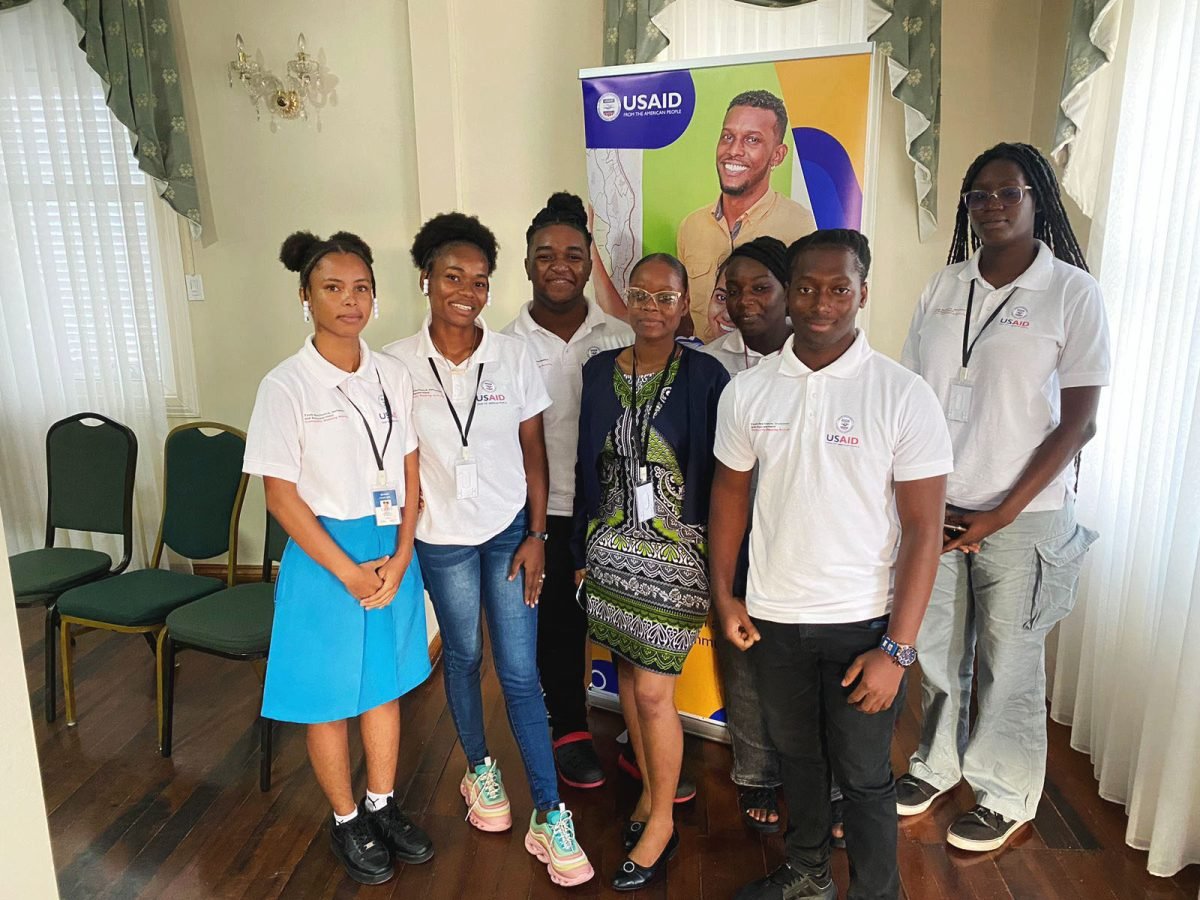By Shuntel Glasgow
The United States Agency for Inter-national Development (USAID) Youth Resilience, Inclusion and Empowerment (Y-RIE) in collaboration with Tagman Media Inc recently conducted a crime and violence research programme to foster youth development and highlight recommendations to help curb the issues.
The Y-RIE program is a youth crime and violence prevention initiative in collaboration with government and non-governmental organisations (NGO) to strengthen social services that serve youths and families at risk.
The research focused on four communities including Albouystown, Charlestown, Werk-en-Rust, and Sophia, with the aim of increasing partnerships to support crime violence prevention, develop a foundation for improved responses, and develop safety profiles for each community with emphasis on key features.
The methodology for the data-gathering process entailed interviews with youths and adults, questionnaires, focussed group discussion, peer-to-peer sessions and community mapping and profiling. The community mapping and profiling help to highlight locations where crimes would frequently occur.
Albouystown, Charlestown, Werk-en Rust
The project manager during his presentation stated that findings from the research in relation to education and employment in Charlestown, Albouys-town and Werk-en-Rust, revealed that almost two thirds of the youths who participated in the survey have completed their secondary education while twenty per cent completed tertiary level and fourteen per cent completed their primary education. The majority of the respondents were youths who seemed to be either self-employed or employed in low-paying jobs. There is significant underemployment and difficulty obtaining jobs due to stigmatisation and marginalisation while being a resident in the community. However, in spite of these odds, these communities are considered to be home to many professionals in areas such as business, law, construction, medicine, athletics, music and fashion.
The crime overview highlighted that thirty per cent of youths indicated that crime is a major problem in their community. Approximately sixty per cent of the surveyed youths indicated that the fear of crime has an impact on how they lead their lives. Some fifteen per cent do not feel safe walking alone in their neighbourhood in the evening. Most youths maintain awareness of their surroundings and avoid certain locations at night and day. Some male youths related that they would carry knives for protection whilst females would only walk at nights in the company of others.
The hotspots for crime, especially robberies, would often occur at nights in areas without adequate street lighting. The hotspots identified in the communities were Sussex Street, Cooper Street, and the Island, while Leopold Street was singled out to be the area where crimes such as murder, assault, and robbery, would frequently occur. As a result, the community profiling and mapping activity identified the crime hotspots and places to avoid based on the perception of the youths. The research unearthed that most of the crime suspects are school dropouts and older adults. Some street lights were vandalized to keep areas dark to facilitate criminal activities.
The issues highlighted by youths include burglaries, physical assaults, illegal drug abuse, gangs, teen pregnancy, neighbour disputes, alcohol abuse, underage drinking and gender-based violence.
Some of the proposed recommendations by the respondents of the communities for crime reduction and violence are; skills training for computer literacy, carpentry, masonry, welding and other trades, developing a big brother and big sister programme, developing a parenting programme, implementing sports competitions, church programmes, talent shows, concerts, maintaining street lights, development of programmes that aim to target teenage pregnancy, counselling, financial support, and enhancing the training of police officers.
The assets and protective factors were highlighted to be schools, churches, masjids, temples, business owners, community centres, health centres, the Independence Boulevard, NGOs, and police youth groups.
It was observed that there are no community centers in Albouystown, Charlestown and Werk-en-Rust. As a recommendation to build the protective assets within the communities the youths suggested that a community centre be constructed and or a field be made accessible and, in some cases, upgraded to facilitate sports programmes.
Sophia – C, D, and E
In Sophia, 30% of youth indicated that crime is a major problem in the community. While 60% of the youths believe that crime has decreased in their area. Approximately 60% of the surveyed youths indicated that the fear of crime has little or no impact on how they lead their lives. Similarly, some explained that carrying knives would be a form of protection while females would prefer walking in the company of others at night.
Regarding education and employment, two thirds of the youths that participated in the survey completed their secondary education while 22% completed tertiary level and 14% primary education. Most of the respondents in Sophia were self-employed while others are engaged in low-paying jobs, compared to other communities. Underemployment and difficulty obtaining jobs were highlighted as significant challenges faced in the community because of stigmatization of residence.
A comment from a young female who wished to remain anonymous stated, “I don’t put my address on my CV when I’m applying for a job. I always use my family address in Kitty. When people see you from Sophia, they don’t want to give you a job.”
Fortunately, the protective factors and assets in Sophia include community centres in C, D and E fields. While the fields are equipped with community centres, they are poorly maintained. Others include pharmacies, churches, masjids, police station, and schools. The ‘E’ Field community centre is overtaken with bushes and is not deemed equipped for sports activities. The washroom facilities are not functional. Similarly, the ‘D’ Field community centre football field is filled with holes sand and bricks and as a result it is not suitable for recreational activities. It was highlighted that the health centre is most time out of medication to provide effective service to the community.
The hotspots highlighted for crime related activities were, at the back of ‘C’, ‘D’ and ‘E’ Fields. These areas were also noted to be liming, smoking and drinking spots for youths.









